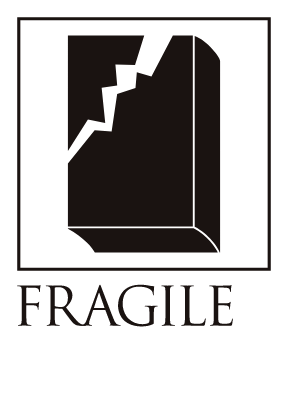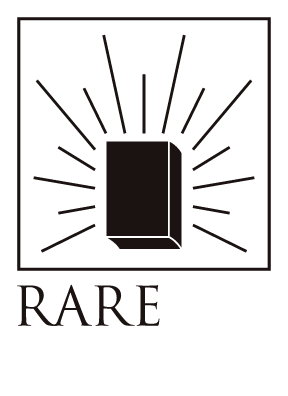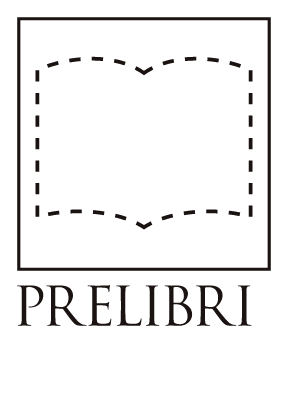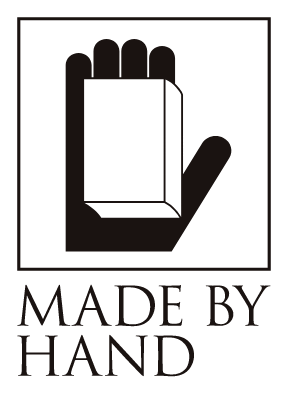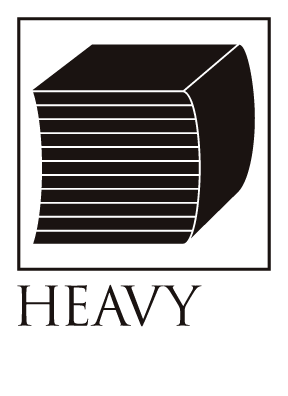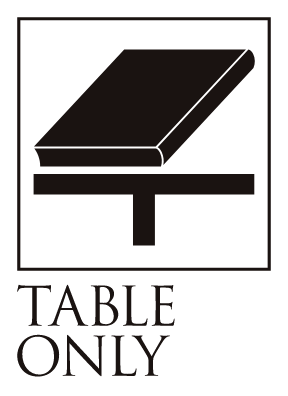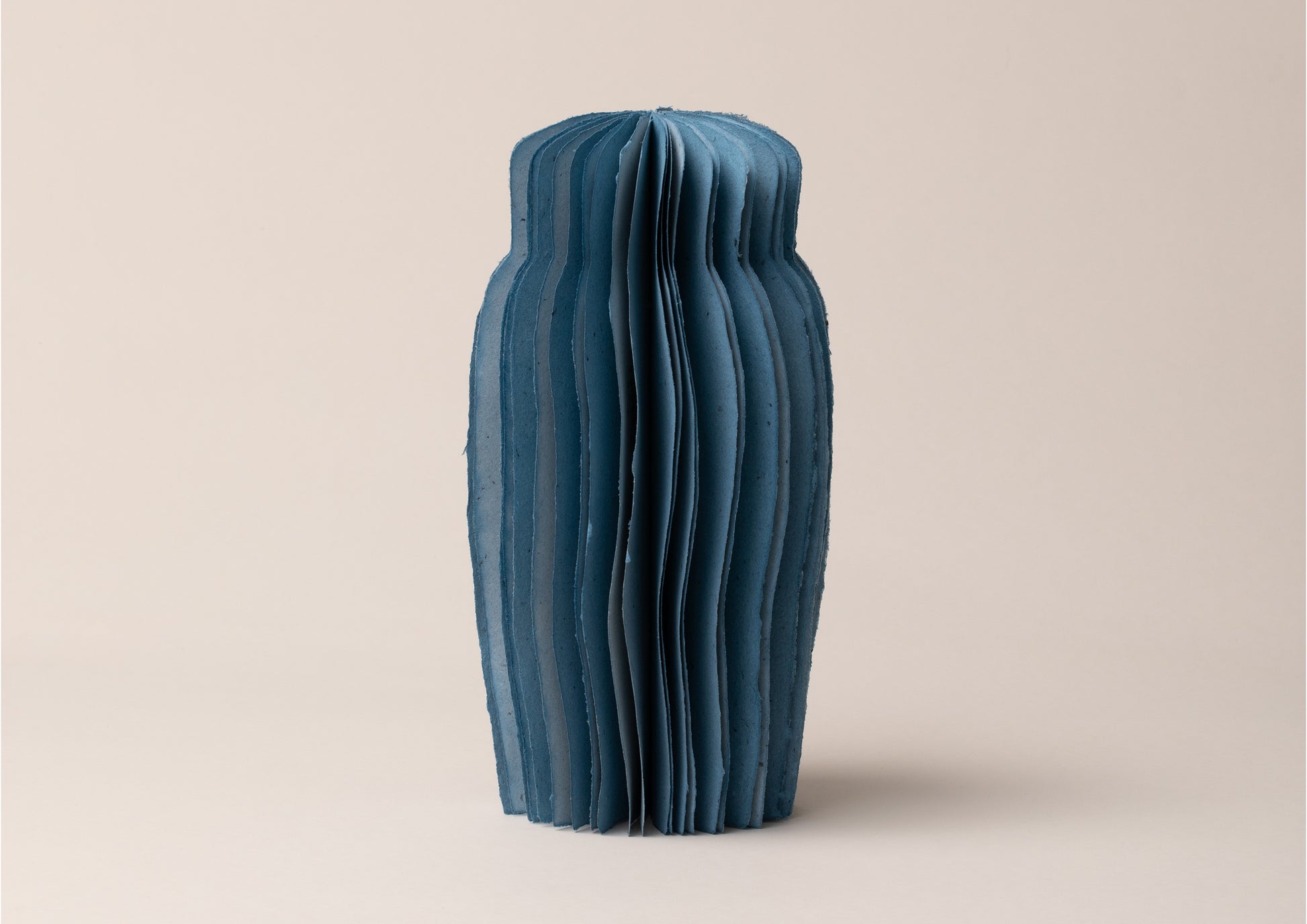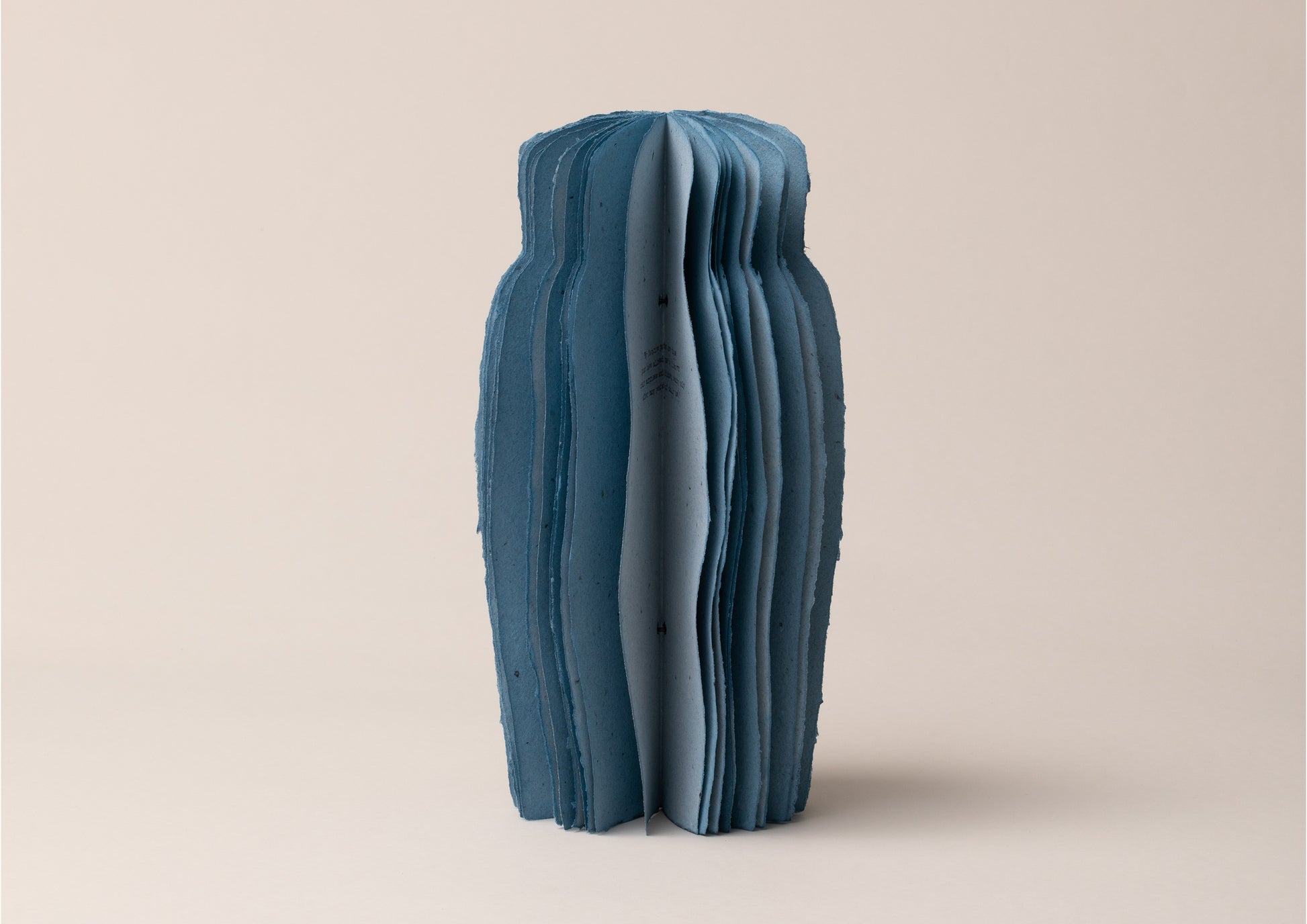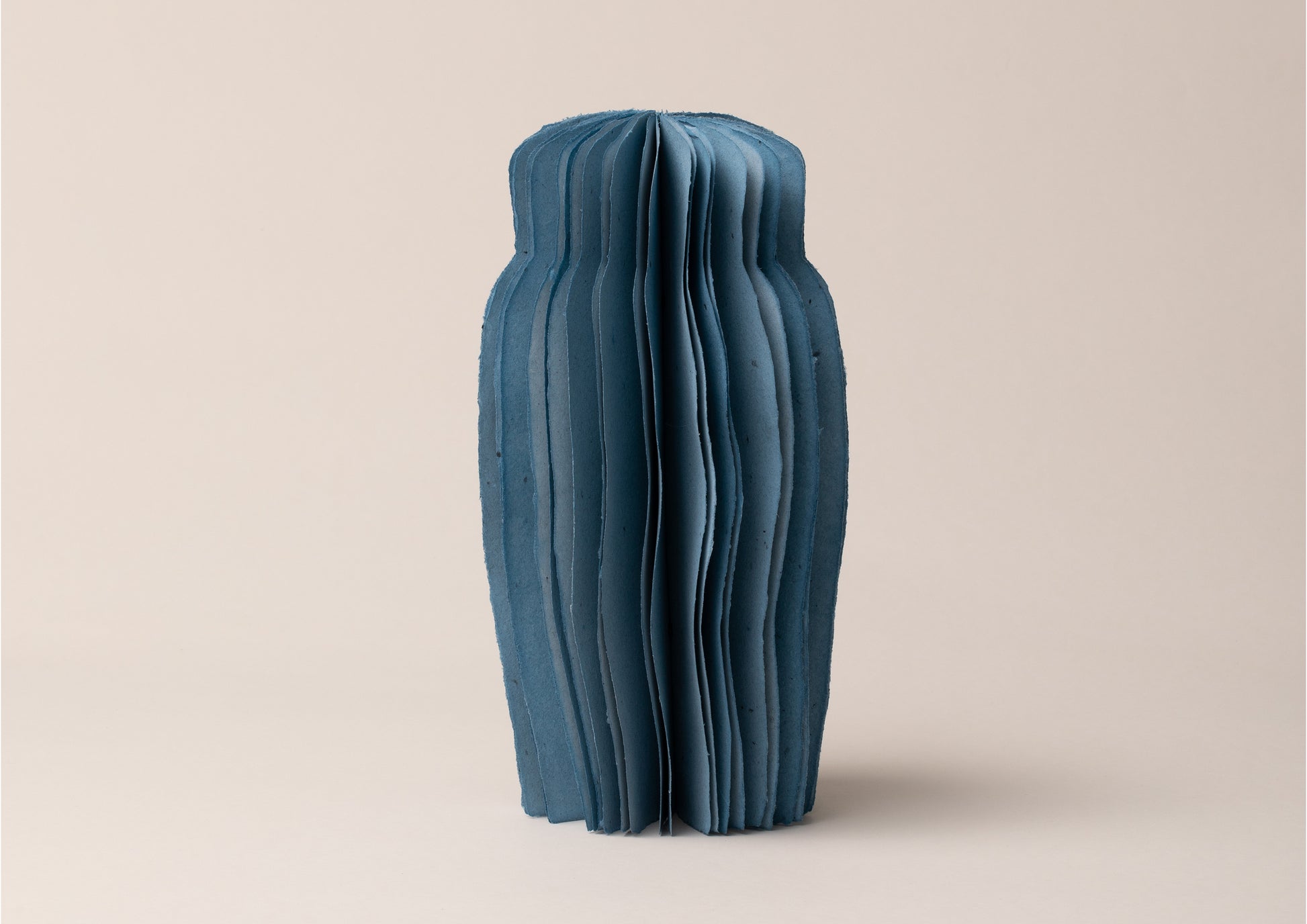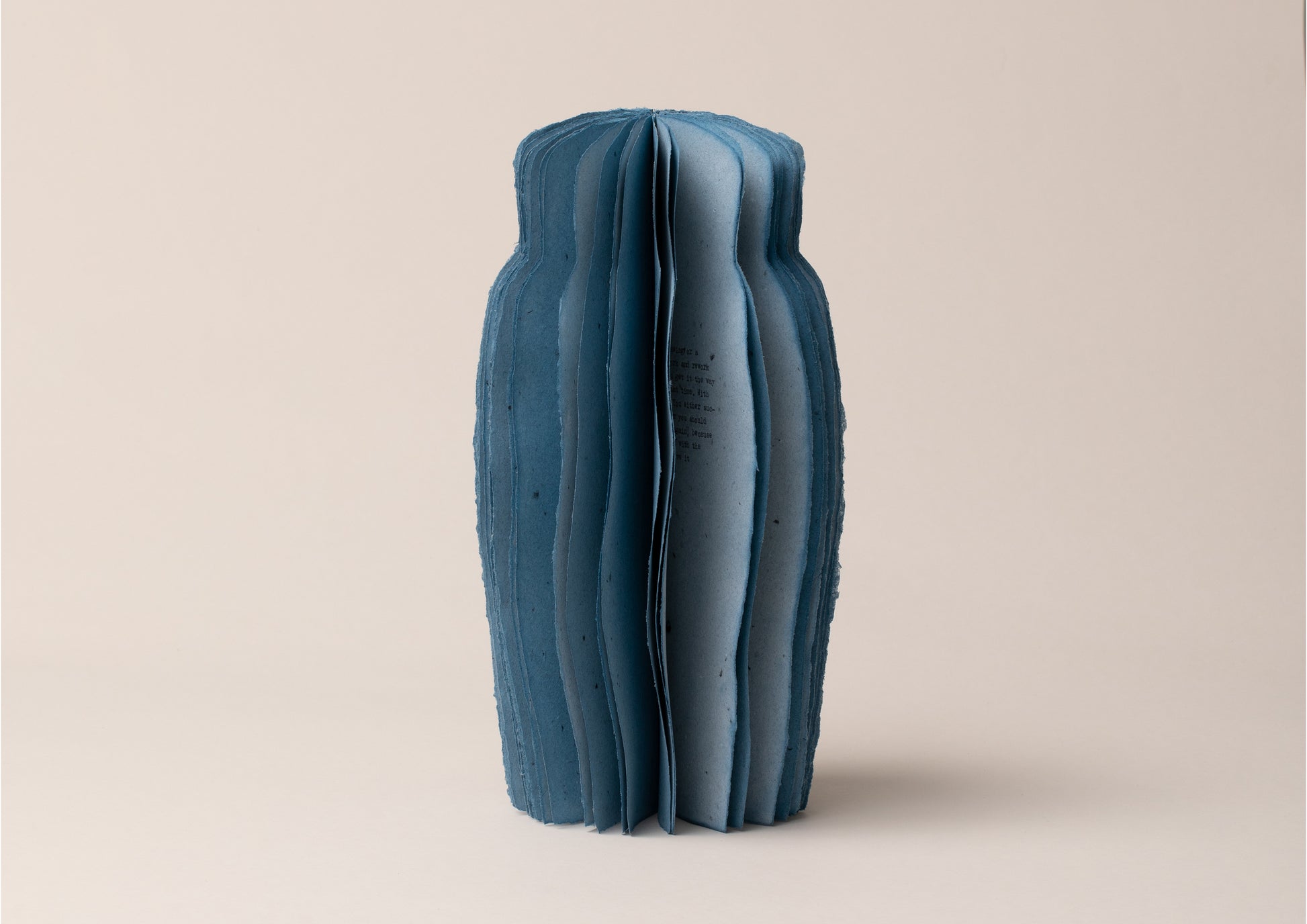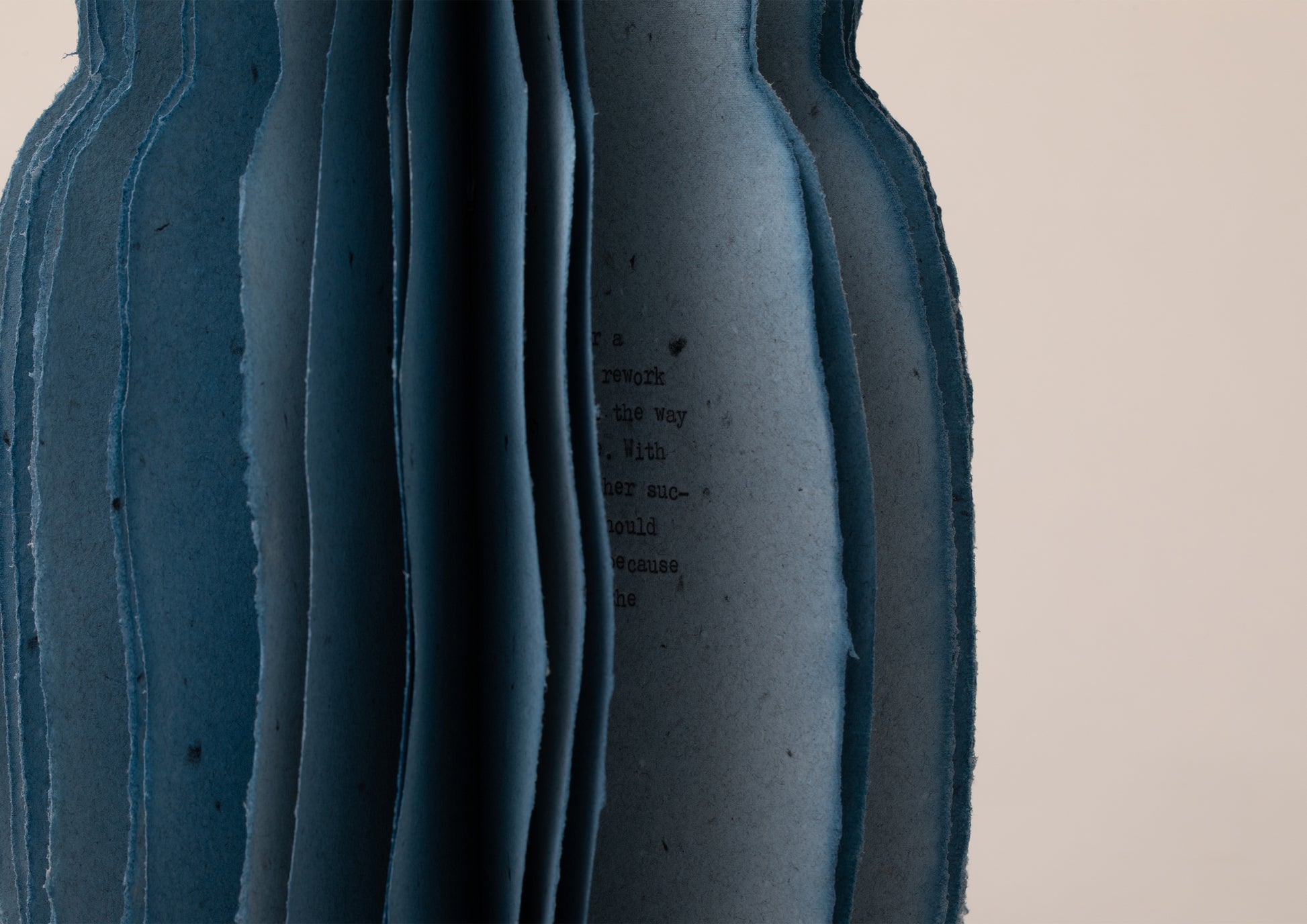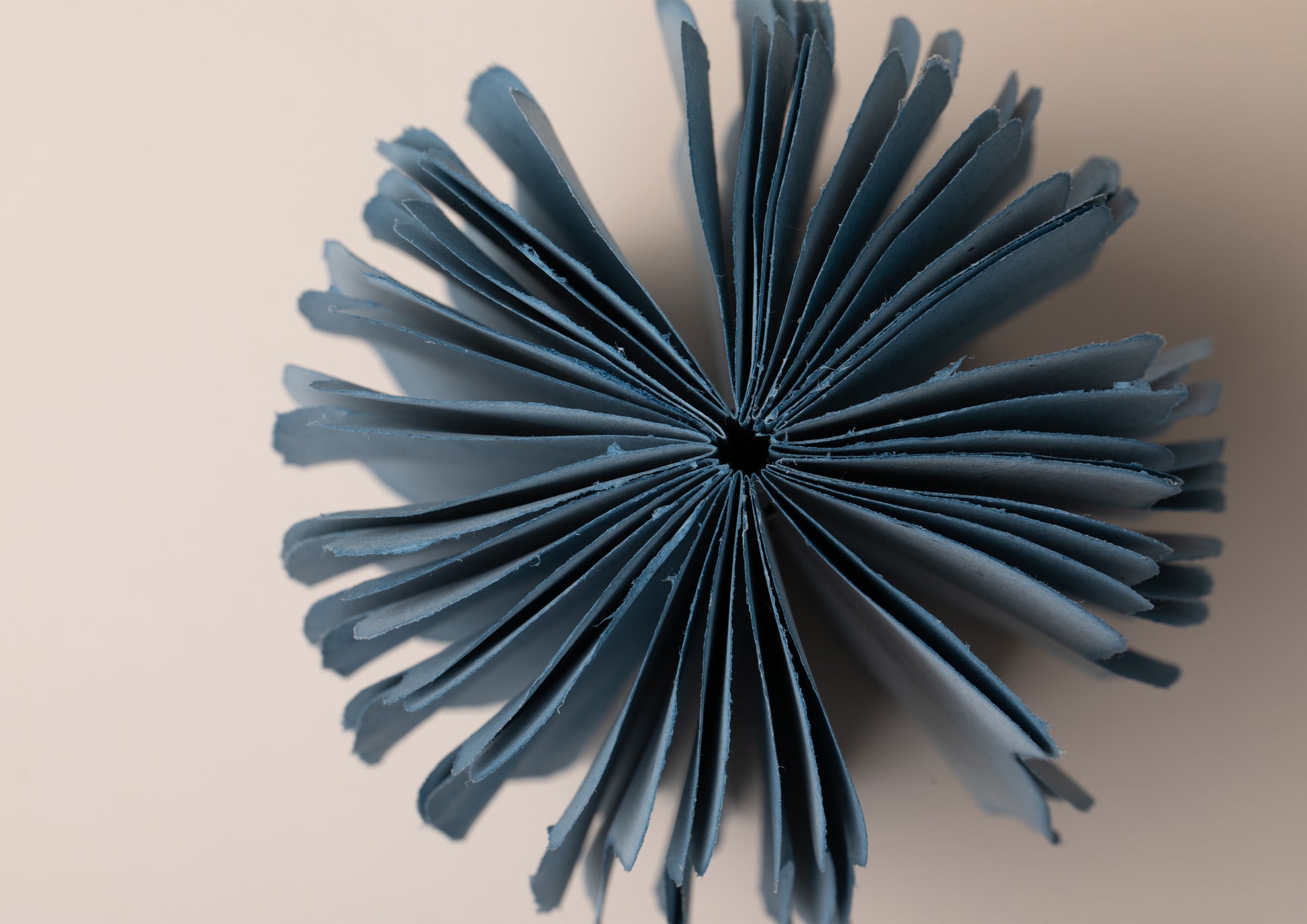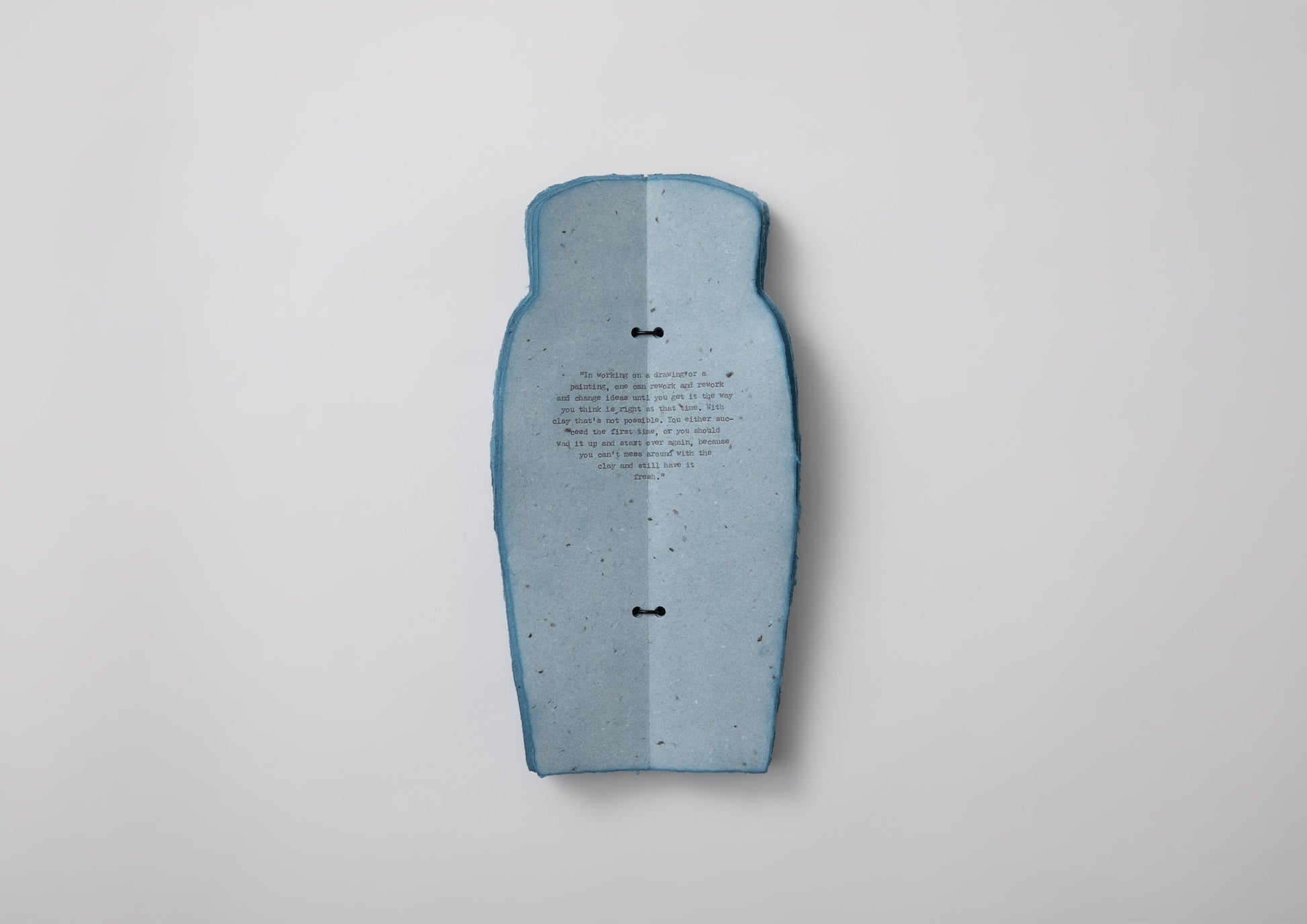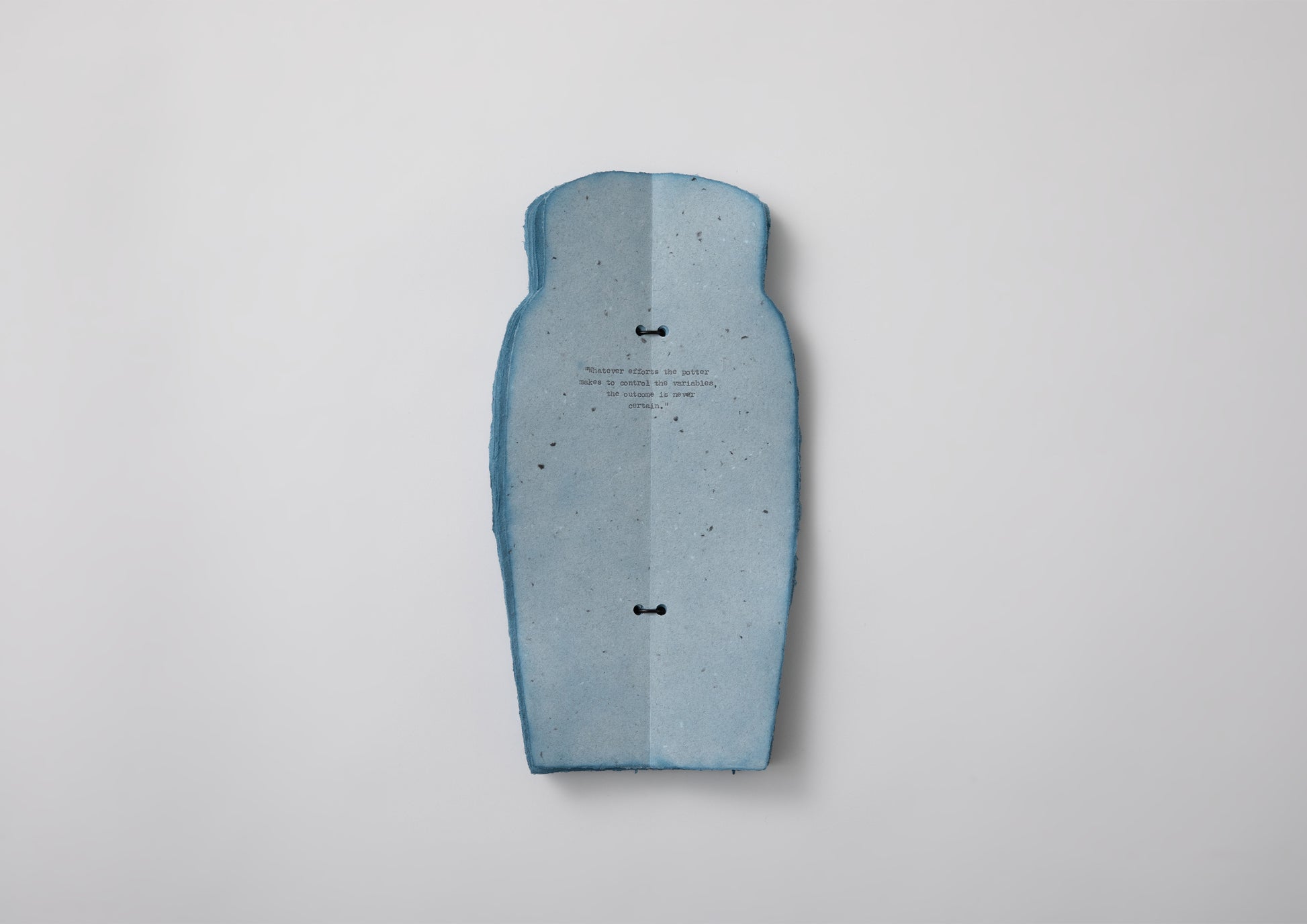Tall covered jar
Bibliographic Details
- Title
- "Tall covered jar" from Thoughts About Pots series
- Artist
- Erica Spitzer Rasmussen / エリカ・スピッツァー・ラスムッセン
- Year
- 2023
- Size
- h330 × w190mm
- Weight
- 250g
- Language
- English / 英語
- Binding
- Hand Binding / 手製本(一点ずつ風合いが異なります)
- Printing
- Typewriter-printed / タイプライターで印字
- Materials
- Handmade paper / 手漉き紙
- Edition
- Unique
- Condition
- As New
It can be folded into a small size and stored. / 小さく畳んで保管できます。
A continuation of the folk art genealogy.
Minnesota soil strained through
A book in the shape of a vessel.
This spring, Erica Spitzer Rasmussen, author of "Seeds of Hope," informed me that she was working on a new three-dimensional book on paper. The book is a tribute to her father-in-law, who was a potter, and takes the form of various ceramics, such as tea bowls, flower vases, and round vases. Soon after, I opened the double box that arrived from the U.S. and found 12 different types of new pieces wrapped in the box. Each piece is bound with a ring of handmade washi paper engraved with words, and when you turn the pages one by one, it becomes a book, and when you stand it up, it becomes a "vessel. When you look at them closely, they look like Hamada Shoji's tea bowls, Yi Dynasty white porcelain, or Leach vases. Erica's father-in-law was Warren MacKenzie, an American who was a world-renowned potter who had the same spirit of folk art as Muneyoshi Yanagi, and who put down roots in Minnesota, North America, and spread ceramics as a daily commodity.
Warren MacKenzie (1924-2018), Erica's father-in-law, was a potter who studied under Bernard Leach and spent more than 65 years in the woods of Minnesota in the Midwestern United States making "vessels for the people. He was greatly influenced by Japanese "Mingei" (folk art) and developed his own community called "MINGEI-SOTA," which is a combination of the words "Mingei" (folk art) and "Minnesota. He was a man who wished to remain an unknown potter and continued to visit his studio until just before his death.
He became a potter after encountering Bernard Leach's "A Potter's Book" (published in 1940) while at the Art Institute of Chicago. He read Leach's book rather than boring classes. After graduation, he went to England with his own pottery and knocked on the door of Leach Pottery, which had a studio in St. Ives. However, he did not have the skills to work with them right away, so he made an appointment to have another look at his work a year later, and when Warren returned a year later, he was allowed to work at Leach's studio. Warren was now 28 years old, and Leach was 63.
In the beginning, he was called "Mr. Leach," but gradually his name changed to Bernard. When he had become completely familiar with Leach Pottery, Shoji Hamada, a close friend of Leach's, arrived from across the sea. This encounter would define the way he would become a potter.
Whenever Hamada had important work to do, such as making tea bowls for the tea ceremony, he would go out of his way to invite his friend to join him, and they would spin the potter's wheel while chatting about trivial matters. While chatting, he was amazed at the work that somehow produced beautiful vessels. I did not see such a frank view of potters in Leach, an English gentleman with a good upbringing. In Hamada's approach, Warren found the kind of potter he was looking for. Unbounded pottery. He saw the ideal in such a state of "detached vision. When Warren asked Hamada Shoji what he should do to make good ceramics, Hamada Shoji replied, "Don't struggle. Do not wrestle, but let the breeze blow you down the hill.
The documentary film "Mingesota: Warren MacKenzie, Minnesota Potter," produced in Japan in 1994, is now on view and should be seen by all. In Minnesota, a region in central North America that might be considered a place where folk art has been abandoned, there is a man who works with vessels every day, wishing to be an unknown potter. Here is an American in the midst of the great swell of Mingei (Folk Art), which is linked to Muneyoshi Yanagi, Shoji Hamada, and Bernard Leach.
By the way, his first assignment at Leach Pottery was to make 50 mugs and small soup plates in one day, and he actually made 600 of them in order to get all 50 approved. Erika's "Thoughts About Pots," too, are in the form of ordinary, familiar utensils, the same size as the real thing, unadorned and modest. Just like Warren's vessels. The typewritten text on the pages is both humorous and solemn. In addition to Warren's own words, they include those of his first wife, Alix MacKenzie, and his teachers Bernard Leach and Shoji Hamada.
Warren made sure to do the molding as well as the mixing of the ceramic clay himself. Erica not only bound books, but also made her own paper and typed on a typewriter. It is precisely because Erica respected her father-in-law, Warren, and carefully observed his work that she was able to create her own memorial to him. I am honored to be able to present this body of work in Japan.
Warren repeatedly told her students, "You have to make something better than something made by machine, and it can't be good if there is no interaction with the user". There are both handmade and machine-made products, and both have their own reasons. I would like you to place Thoughts About Pots in your daily life. We hope you will place Thoughts About Pots in your daily life, just like the mugs and pots you use every day, always within easy reach.
-Text by Ema Otobe
Thoughts About Pots
Erica Spitzer Rasmussen
In the spring of 2023, Erica Spitzer Rasmussen, the author of "Seeds of Hope," informed me that she was currently working on a new three-dimensional book on paper. The book is a tribute to her father-in-law, who was a potter, and takes the form of various ceramics, such as tea bowls, flower vases, and round vases. Soon after, I opened the double box that arrived from the U.S. and found 12 different types of new pieces wrapped in the box. Each piece is bound with a ring of handmade washi paper engraved with words, and when you turn the pages one by one, it becomes a book, and when you stand it up, it becomes a "vessel. When you look at them closely, they look like Hamada Shoji's tea bowls, Yi Dynasty white porcelain, or Leach vases. Erica's father-in-law was Warren Mackenzie, an American who was a world-renowned potter who had the same spirit of folk art as Muneyoshi Yanagi, and who put down roots in the Minnesota area of North America and popularized ceramics as a daily commodity.
Regular price
$632.00 USD
Regular price
Sale price
$632.00 USD
Unit price
per
